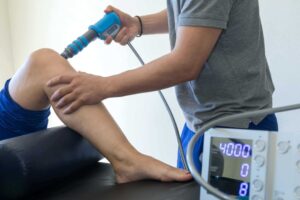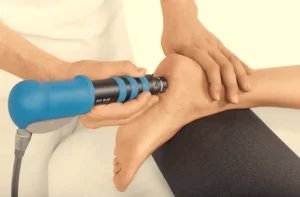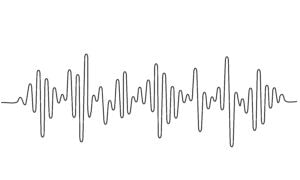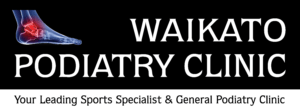The Healing Power of Shockwave Therapy
What is Shockwave Therapy?
It is easiest to think about this modality as a "tissue reboot", not unlike rebooting a computer system. The tissue involving collagen in our bodies has a tendency to become disorganised and confused in the healing cascade, much like an overloaded computer. If we reboot the tissue, this then allows for the restart of the cascade, and a better organisation of the tissue.
Radial shockwaves are introduced into the body by means of a freely moved applicator over the entire pain region. Radial shockwaves are often referred to as radial pressure waves (RPW), which is the correct definition in physical terms. The energy from these acoustic waves is being transferred into the tissue. This is what provides the mechanical stimulation and gives the effect.
The pathological association between pain and muscle tone and vascular tone is broken as a result of shockwave therapy and the strong stimuli it produces, thus enabling natural movement patterns to be remembered and recalled.
What are the side effects of shockwave therapy?
Side effects are rare, as we are working with the body to stimulate the body's own natural healing mechanisms without introducing any external artificial substances, such as chemicals or needles. Some side effects may occur and include:
- Reddening
- Swelling
- Pain
- Haematoma (bruising)
- Petechia (red spots)
What to expect from shockwave treatment
RPW Shockwave - helping improve healing and reduce pain in chronic musculoskeletal conditions. A course of treatment usually involves three to six treatments spread a week apart. This is to allow for a cumulative effect in the tissue, but also to allow time for reset and calming of the reactivated tissue before redosing.
It is also worthy to note that the healing effect will continue once shockwaves have ceased. Full collagen maturation can take up to three months.
Will shockwave work for me?
Radial pressure wave therapy is indicated for the following applications:
- Heel pain - this is one of the best researched treatments for this condition. In a recent article in the British Journal of Sports Medicine 2021 this modality was ranked as one of the top three in the treatment of plantar heal pain.
- Myofascial trigger points - localised tender or painful area.
- Tendinopathies, eg/ plantar fasciitis, Achilles tendinopathy.
There is a growing body of medical evidence and literature on the efficacy of RPW therapy, we're happy to provide you more information about this at your request.
Contraindications of shockwave therapy
If you have/are any of the following, your Podiatrist will be able to advise you further:
- Pregnancy
- Heamophilia or other coagulation disorders
- Acute inflammation
- Disturbed sensory and nervous function, eg/
diabetes - Corticosteroid injections - wait minimum of 6 weeks after local injections
- Malignancy
- Prostheses and implants
Post-treatment recommendations
It is not uncommon for patients to feel immediate pain relief post treatment, but this is not the norm, especially early on in treatment.
Patient should be advised on ‘active rest’ for 24-48 hours post treatment.
Patient may continue with strengthening exercises, but do not increase load for the first 48 hours post treatment (due to pain inhibition effect), and the risk of potential overload of the tendon.
Ice is not recommended, if there is pain post treatment, use for 2-4 min maximum.
If patient is not undertaking a loading program (isometric, concentric, eccentric), recommend commencing gradual loading from session 2-3.
The patient may experience post treatment flare; treat again once flare has settled; this is very uncommon in our experience.

Are you feeling like you have tried everything but are still in pain?
Do you feel like you have seen every health practitioner you can about your tendon pain?
Contact Waikato Podiatry Clinic now to make an appointment!
10 Pembroke Street, Hamilton 93a Thomas Road, Rototuna


Hi
I had a right total knee replacement on the 7th October. I am wondering if this treatment will help with my recovery. I am not yet reaching full flexion/extension and am unable to do a full circle on the cycle. I am attending physio.